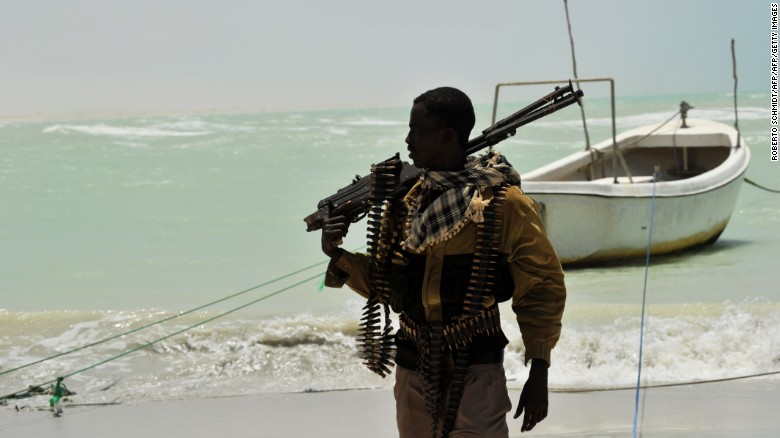Pirates in Somalia still a major threat as attacks double-report


By Fauxile Kibet
Pirate networks off the coast of Somalia are still capable of launching sophisticated attacks, a new report has revealed warning piracy incidents doubled in 2017 compared to the previous year.
The US based anti-piracy campaign body One Earth Future (OEF) said in its Oceans Beyond Piracy program report Monday there was need for a new approaches to combat piracy threats which have now been compounded by the ongoing war in Yemen.
The report reveals that as compared to 2016 where a total of 27 piracy/armed robbery attacks were reported, 54 incidents were reported in 2017.
“Pirate activity in 2017 clearly demonstrates that pirate groups retain their ability to organize and implement attacks against ships transiting the region,” said Maisie Pigeon said.
According to the maritime body, there was a 13 percent decreased in the use of private armed security personnel between January 2015 and December 2017.
It further notes that additional threats complicate the maritime security picture in the Western Indian Ocean region, including spillover into the maritime space from the political conflict in Yemen.
“There are now a wide range of threats to shipping near the Horn of Africa that have been complicated by the conflict and instability in Yemen,” says Phil Belcher, Marine Director of INTERTANKO.
“We are advising our members to consider a more comprehensive security assessment to take into account other threats beyond traditional piracy emanating from the regional conflict in Yemen.”
The report also observes that Somali pirates are considered well-armed as they are known to use automatic weapons and rocket propelled grenades (RPGs and in some cases use skiffs – which may be hijacked fishing vessels to conduct piracy attacks.
The economic cost of piracy however declined in 2017, the report notes standing at $1.4 billion compared to $1.7 billion in 2016. The economic cost of piracy in Somalia peaked in 2010 recorded at $7 billion.
The first hijacking of an ocean-going merchant vessel in 5 years was recorded with the capture of the Aris-13 in March 2017.
ESCALATING THREAT
Piracy experts have now raised alert over the escalating threat saying that what initially looked like one-off attacks on vessels is now looking more like a concerted and organized effort to attack shipping.
Further, carelessness has been identified as one of the major factors that has led to an escalation in such attacks and that failure by vessels to adhere to the best practices document BMP4 issued by a group of maritime authorities was to blame.
BMP4 requires all vessels to register with the Maritime Security Centre Horn of Africa (MSCHOA) before entering the High Risk Areas (HRA), to report to a military liaison daily while in the area, and to implement protection measures such as lookouts and physical barriers to boarding.
Also, it requires vessels to remain within the International Recommended Transit Corridor (IRTC) that is protected by military support vessels from the European Union Naval Force (EU NAVFOR) and NATO.